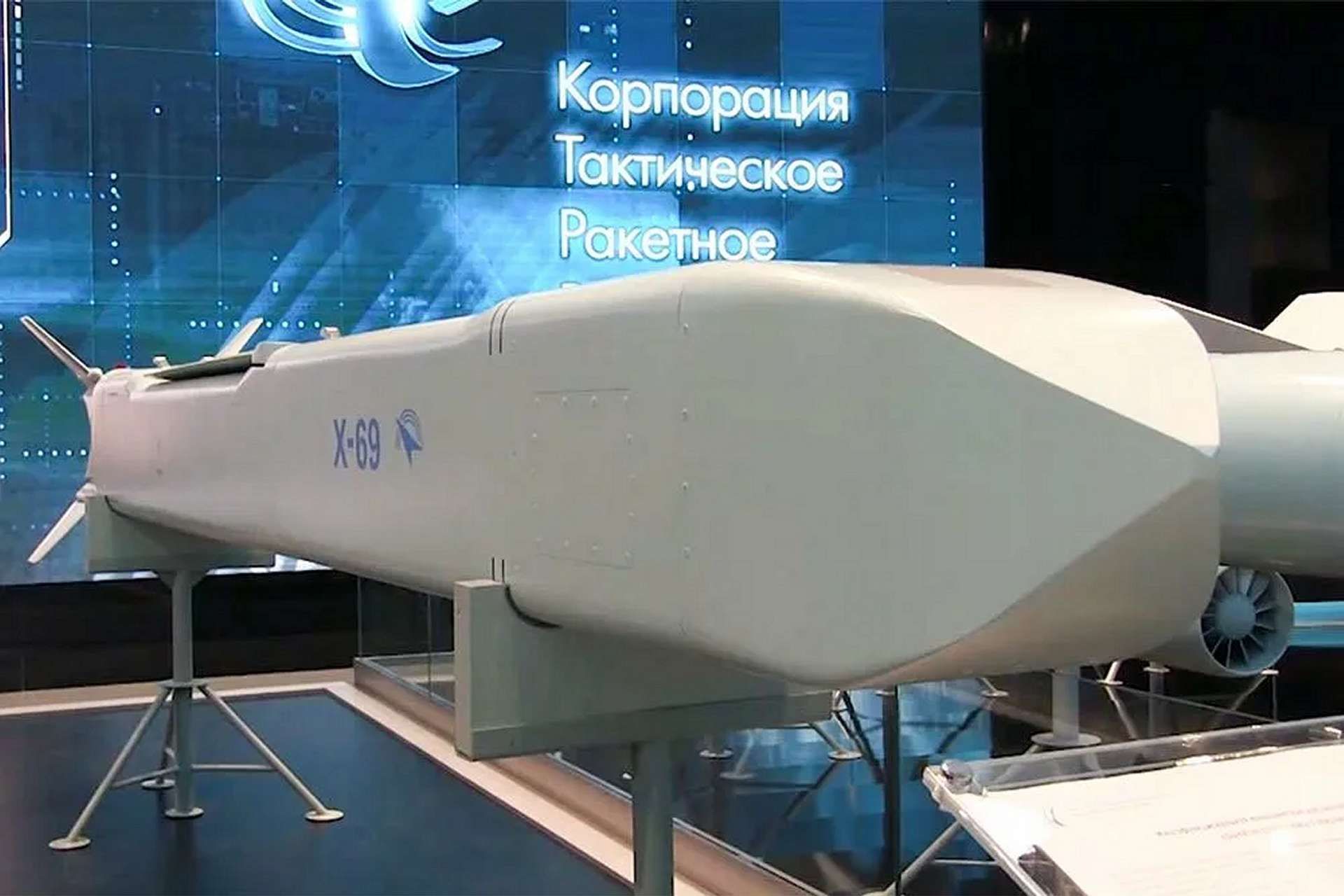Breaking News
Ukraine Air Defense Shoots Down Russia’s Cutting-Edge Kh-69 Cruise Missile for the First Time.
The Ukrainian Air Defense Forces successfully intercepted a Russian Kh-69 cruise missile over the Odessa region, marking the first known instance of downing this new generation missile. The interception occurred on the night of October 19, 2024, as Russian Aerospace Forces targeted Ukrainian infrastructure in the region using this advanced missile system.
Follow Army Recognition on Google News at this link

The Kh-69, unveiled in 2023, is Russia's latest-generation air-to-surface cruise missile. It is designed for precision strikes with a range of up to 290 kilometers and advanced stealth capabilities, making it difficult to detect and intercept. (Picture source: Russian Social Network)
The Kh-69, a state-of-the-art air-launched cruise missile, was officially unveiled by Russia in 2023. Designed as part of Russia’s newest arsenal of precision-strike weapons, the Kh-69 can be equipped with a variety of warheads, including the cluster munition variant intercepted over Odessa. Its versatility, range, and improved guidance systems had made it a formidable addition to Russia's missile stockpile, drawing concern from military analysts about its potential to bypass air defense systems.
The Kh-69 represents a significant leap in the Russian military's capability for precision strikes. With a range of up to 290 kilometers (about 180 miles), the Kh-69 is designed for tactical missions, allowing it to target important infrastructure and military positions well within enemy territory. Though its range is not as extensive as some other Russian long-range missiles, such as the Kh-101, it excels in striking mid-range targets with high accuracy.
One of the standout features of the Kh-69 is its advanced guidance system. The missile is equipped with a combination of inertial navigation systems (INS) and satellite guidance, giving it the ability to adjust its flight path mid-course to ensure precision. This guidance technology also allows the missile to follow complex flight trajectories, including low-altitude profiles that make it harder for radar systems to detect and track. The missile can also be fitted with various types of warheads, including conventional and cluster munitions, increasing its versatility depending on the target's nature.
The propulsion system of the Kh-69 enables it to travel at subsonic speeds, a typical feature for many cruise missiles. However, the missile's ability to maintain a low radar cross-section, combined with its low altitude flight paths, makes it difficult to intercept. The challenge in intercepting the Kh-69 lies in its stealth characteristics and maneuverability. The missile is designed to fly under the radar, hugging the terrain to avoid detection. Its smaller size and radar-absorbing materials also contribute to its stealth capabilities, which reduces the effectiveness of conventional air defense radars.
Ukraine's successful interception of the Kh-69 on October 19, 2024, marks a significant achievement, as this missile's features make it particularly difficult to detect and shoot down. Ukrainian air defense systems had to overcome the missile's low-altitude flight path and rapid adjustments in trajectory, which are designed to evade defensive measures. This success demonstrates Ukraine’s improved air defense capabilities and highlights the evolving nature of the conflict, where both sides are deploying increasingly advanced technologies.
However, Ukraine’s rapid enhancement of its air defense capabilities, backed by Western military support, proved instrumental in this success. The Ukrainian military has been progressively reinforcing its air defense network, integrating cutting-edge radar, detection, and interception systems over the course of the ongoing conflict. These systems have been crucial in protecting Ukrainian urban centers and critical infrastructure from missile and drone strikes, particularly as Russia has increasingly relied on long-range precision strikes in recent months.
Ukrainian authorities confirmed the successful downing of the Kh-69 on the widely followed Telegram platform, signaling a significant win for the country's air defense. Military officials emphasized the importance of this interception, as it demonstrates the evolving capacity of Ukrainian forces to counter Russia's most sophisticated missile systems. The cluster warhead carried by the missile, had it reached its target, could have caused significant damage to both military assets and civilian infrastructure in the Odessa region.
The interception also highlights the shifting dynamics of the conflict, where technological advancements and rapid response measures by Ukraine are playing a crucial role in mitigating the impact of Russia’s aerial campaigns. Odessa, an important port city and key logistical hub, has been a frequent target for missile strikes, given its strategic significance in the Black Sea region. The city and its surrounding areas have endured repeated attacks aimed at crippling supply routes and economic infrastructure.
Ukraine's successful interception of the Kh-69 may prompt Russia to reassess the efficacy of its air-launched missiles in the conflict. Experts believe that Moscow intended to test the capabilities of the Kh-69 against Ukraine’s enhanced air defenses, but the interception represents a substantial setback for their plans to use newer missile technology with impunity.


























